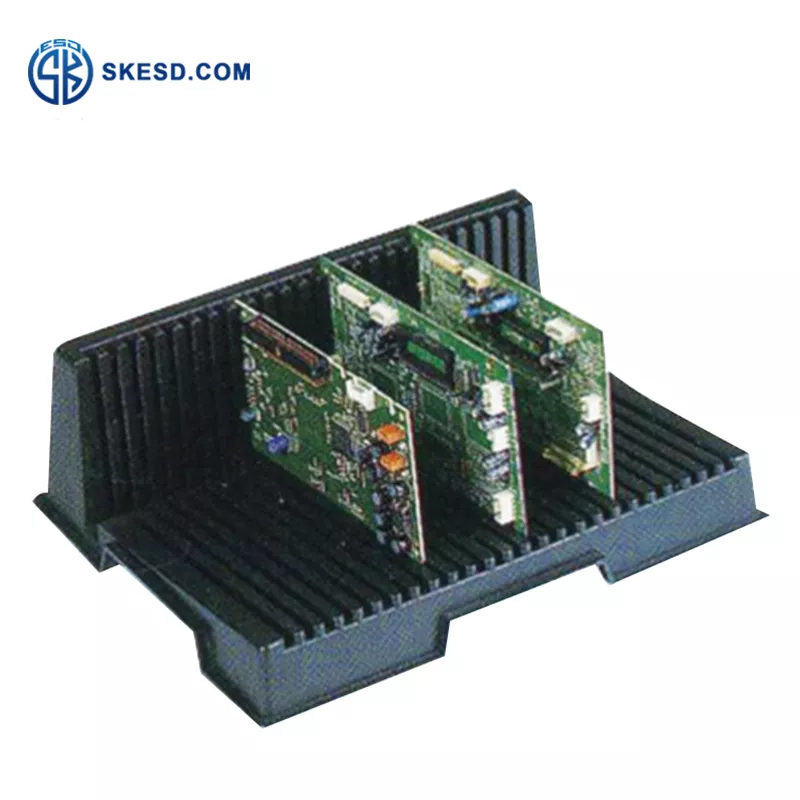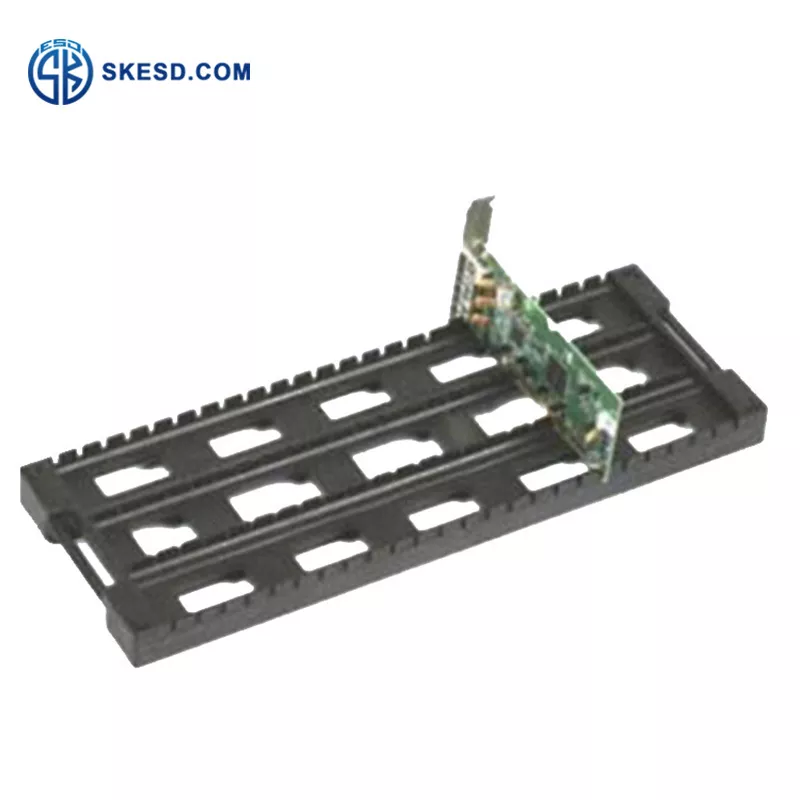An ESD (Electrostatic Discharge) PCB rack is designed to prevent electrostatic discharge, which can cause damage to sensitive electronic components. Here’s how an ESD PCB rack helps in mitigating the risks associated with electrostatic discharge:

- Conductive Materials: An ESD PCB rack is constructed using materials that are conductive or have a low electrical resistance. These materials, such as metal or carbon-filled polymers, help to dissipate electrostatic charges instead of allowing them to accumulate on the rack’s surface.
- Grounding: The ESD PCB rack is connected to a grounding system to provide a controlled path for the discharge of electrostatic charges. By grounding the rack, any charges that build up on the surface or within the rack are quickly and safely discharged to a designated ground point, preventing potential discharge events.
- Surface Resistance: The surface of an ESD PCB rack is engineered to have a specific resistance, typically in the dissipative or conductive range. This controlled surface resistance helps to minimize the generation of static charges and provides a controlled path for their dissipation.
- Faraday Cage Effect: The design of an ESD PCB rack often incorporates elements of a Faraday cage. A Faraday cage is an enclosure made of conductive materials that forms an electrostatic shield. It works by redirecting and absorbing electrostatic charges, preventing them from reaching the sensitive components stored within the rack.
- Compliance with ESD Standards: ESD PCB racks are designed and manufactured in accordance with industry standards and guidelines for ESD protection. These standards define requirements for materials, construction, grounding, and surface resistance to ensure effective ESD mitigation.
By utilizing an ESD PCB rack, electronic components can be safely stored and transported in controlled environments. The rack’s design and materials help to dissipate electrostatic charges, provide a controlled discharge path, and prevent the build-up of charges that can potentially damage sensitive components. This contributes to maintaining the integrity and reliability of electronic assemblies and reduces the risks associated with electrostatic discharge.
Related Products:
continue reading






